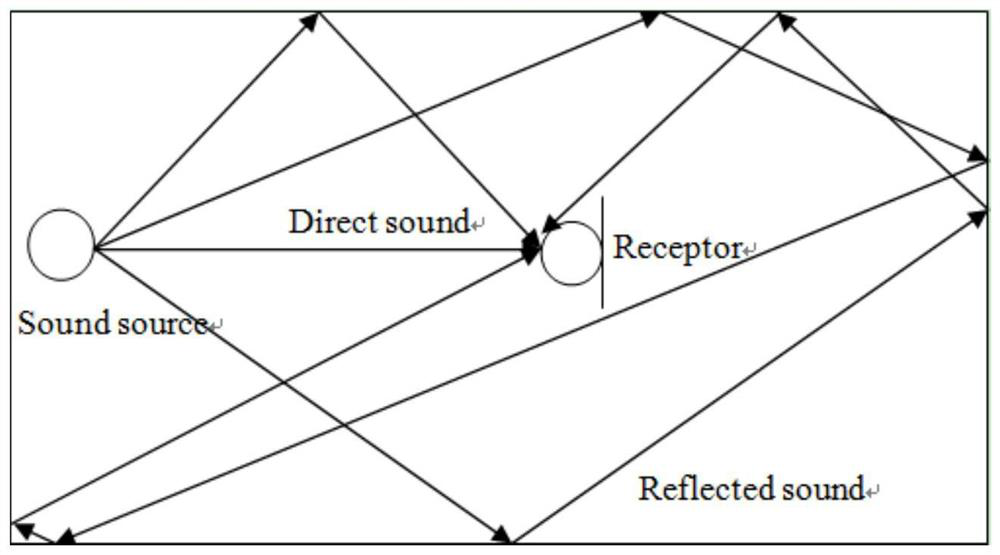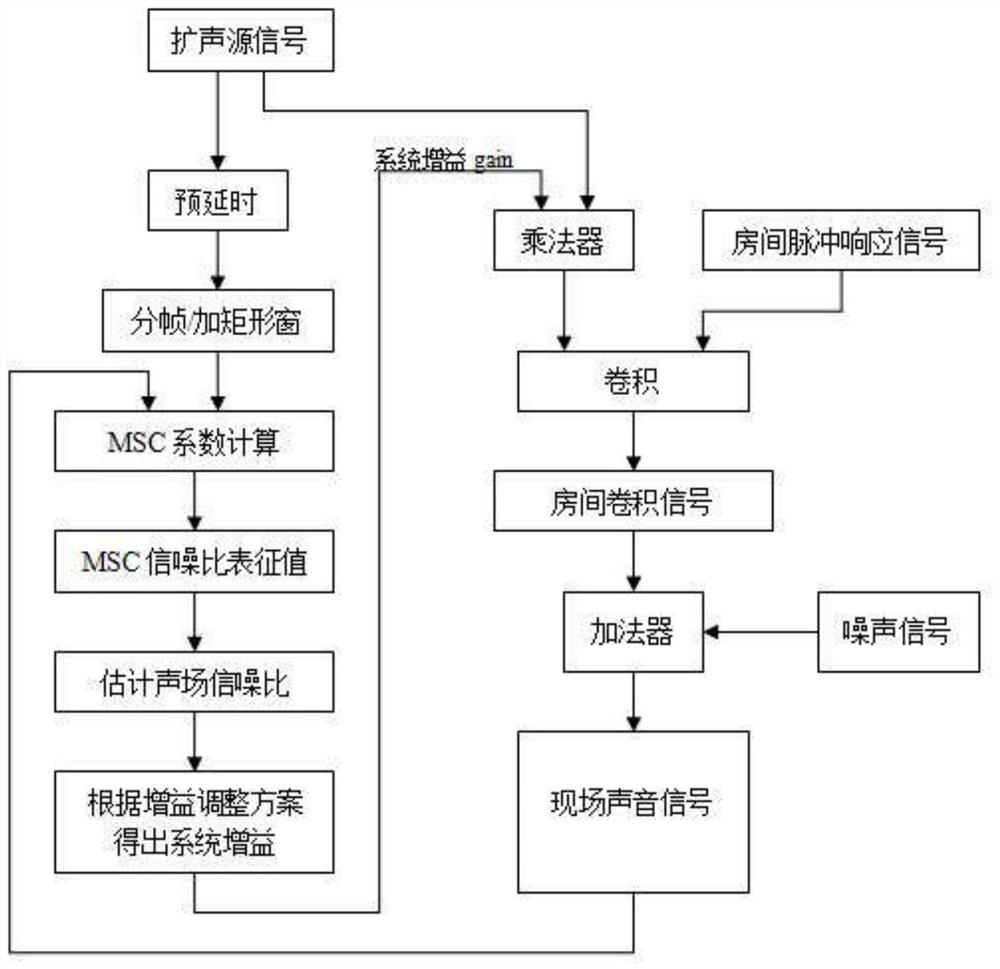Gain Adaptive Control Method for Sound Reinforcement System
An adaptive control and sound reinforcement system technology, applied in signal processing, sensor components, sensors, etc., can solve problems such as sound masking, noise pollution, and fixation, and achieve a basically constant signal-to-noise ratio and strong real-time effects
- Summary
- Abstract
- Description
- Claims
- Application Information
AI Technical Summary
Problems solved by technology
Method used
Image
Examples
Embodiment
[0068] Such as figure 1 As shown, in the real scene, because the mixed signal of the sound reinforcement scene is the signal obtained by convolution of the sound reinforcement source signal and the sound propagation path parameters of the scene plus the noise signal, the mixed signal and the sound reinforcement source The signal has a large correlation degree, and the degree of correlation depends on the signal-to-noise ratio. When the signal-to-noise ratio is low, the correlation degree is smaller; and when the signal-to-noise ratio is high, the correlation degree is larger. The sound reinforcement source signal can be collected directly from the power amplifier, and the on-site mixed signal can be obtained by setting a microphone on site. The above-mentioned signals are all real-time signals, and real-time detection of their correlation is feasible, and then the signal-to-noise ratio is estimated according to the correlation, and then the gain of the sound reinforcement syste...
PUM
 Login to View More
Login to View More Abstract
Description
Claims
Application Information
 Login to View More
Login to View More - R&D
- Intellectual Property
- Life Sciences
- Materials
- Tech Scout
- Unparalleled Data Quality
- Higher Quality Content
- 60% Fewer Hallucinations
Browse by: Latest US Patents, China's latest patents, Technical Efficacy Thesaurus, Application Domain, Technology Topic, Popular Technical Reports.
© 2025 PatSnap. All rights reserved.Legal|Privacy policy|Modern Slavery Act Transparency Statement|Sitemap|About US| Contact US: help@patsnap.com



